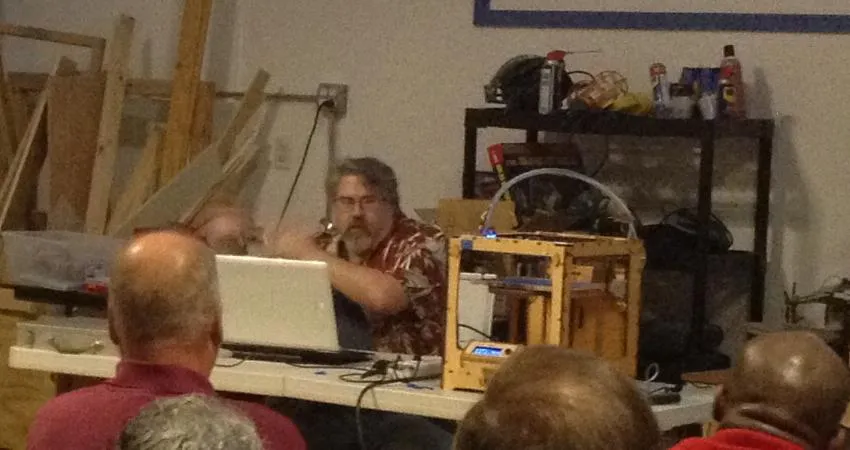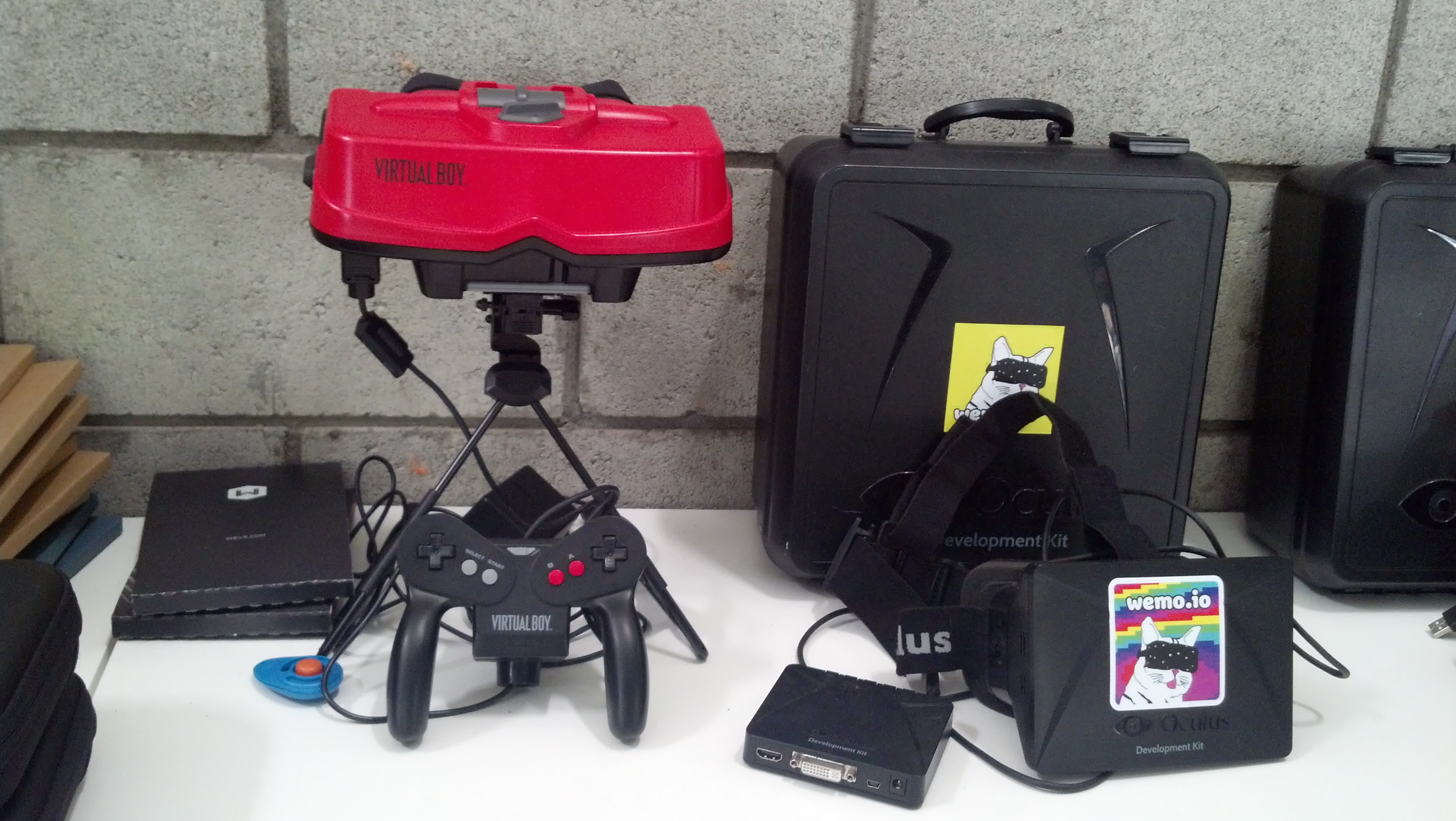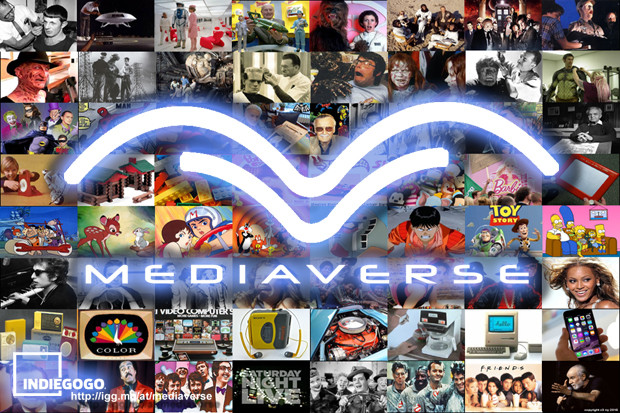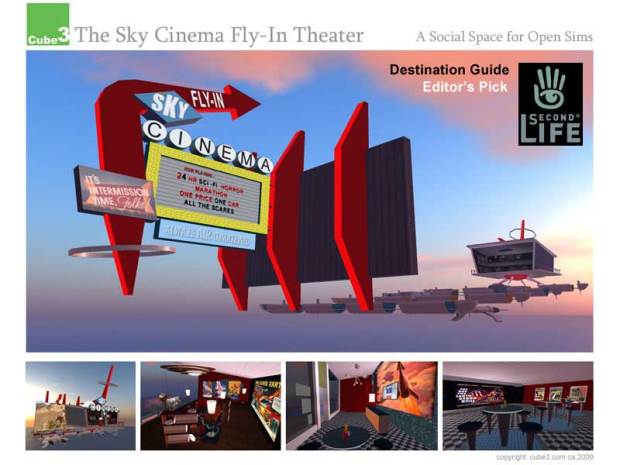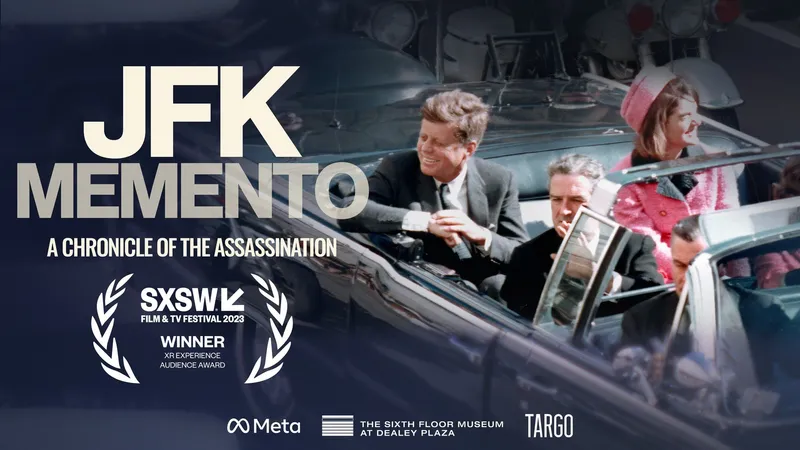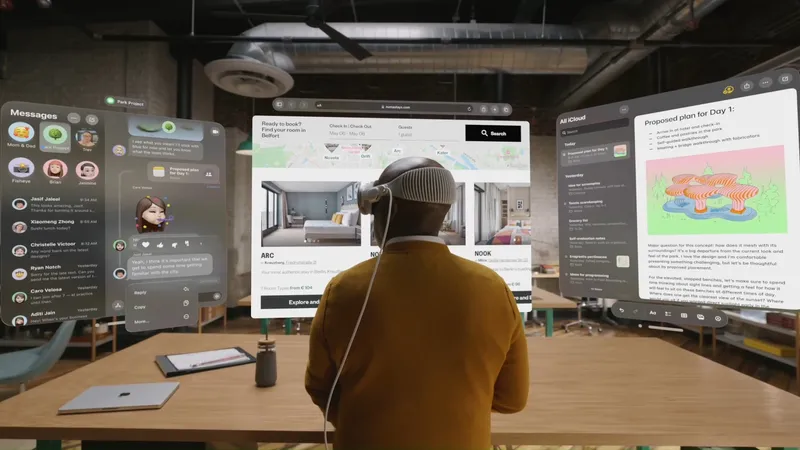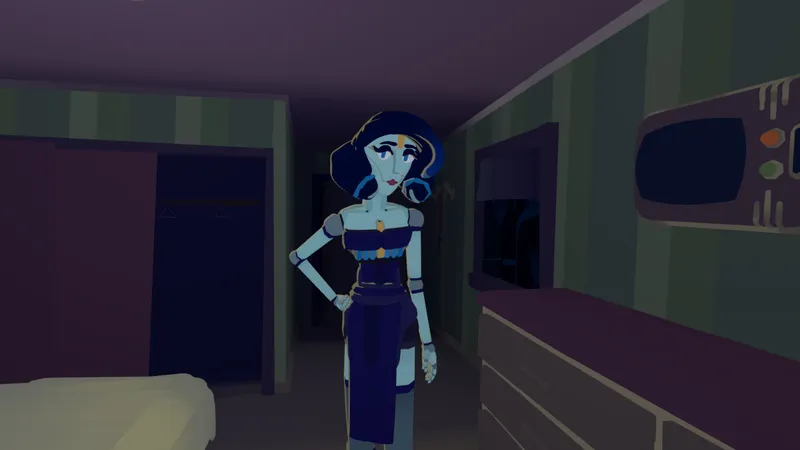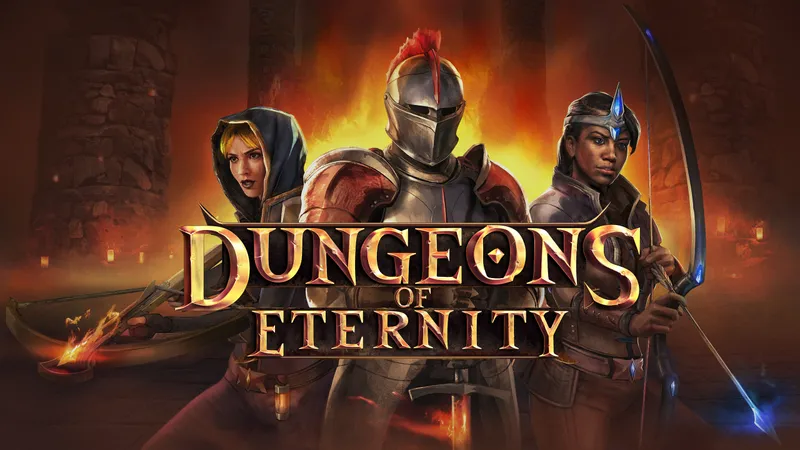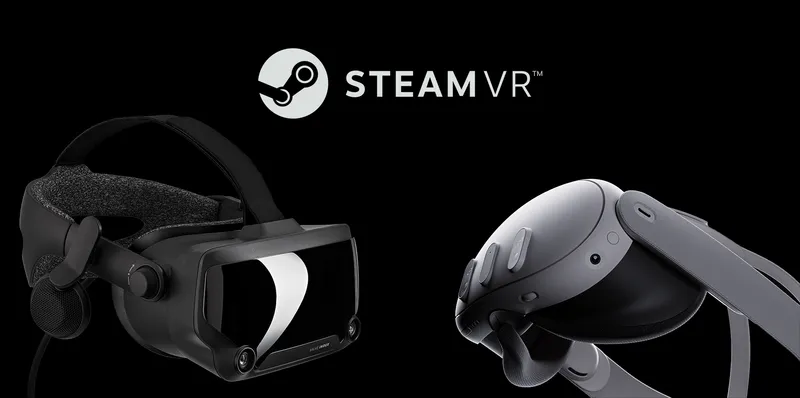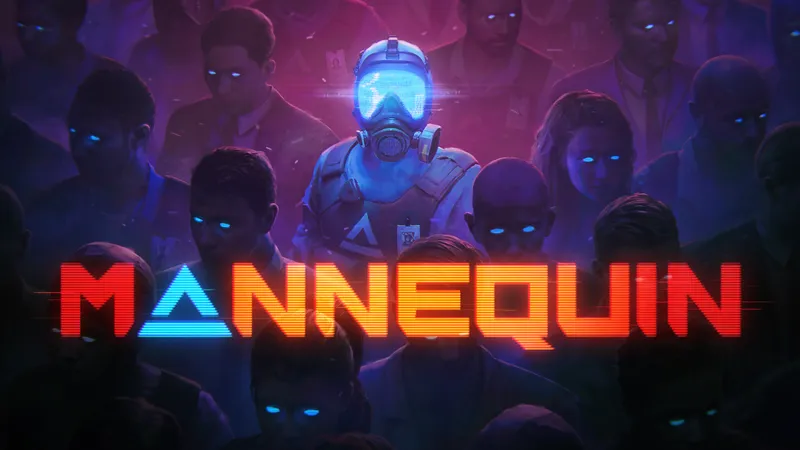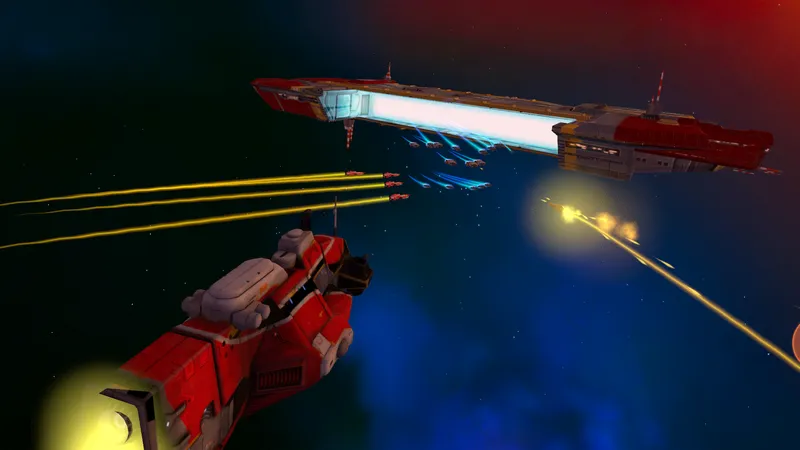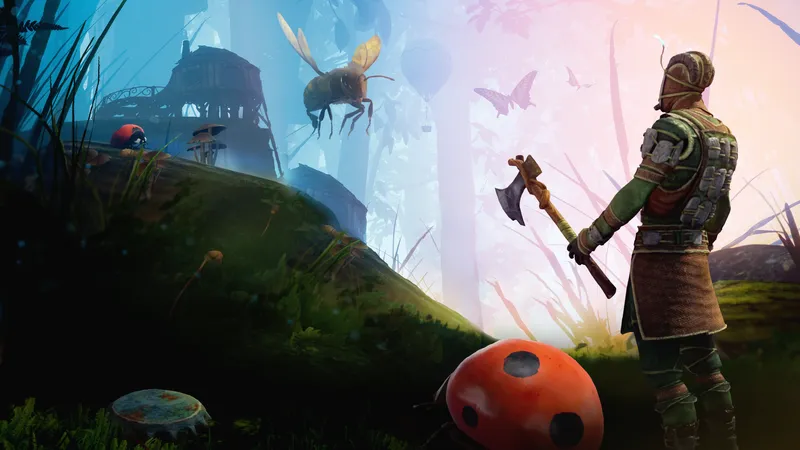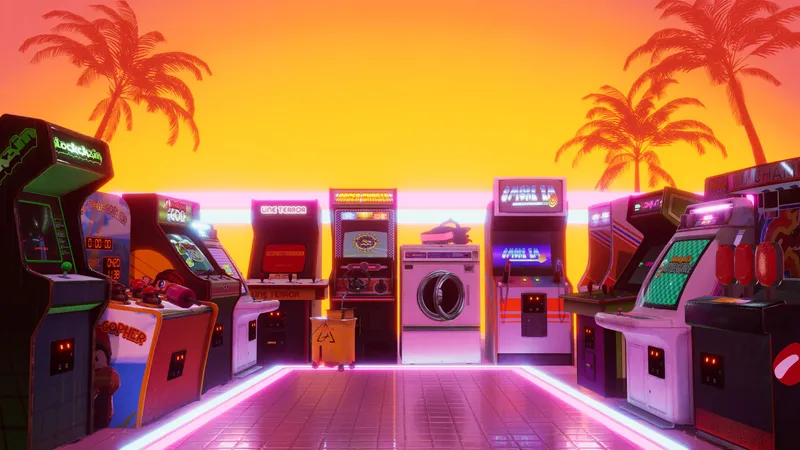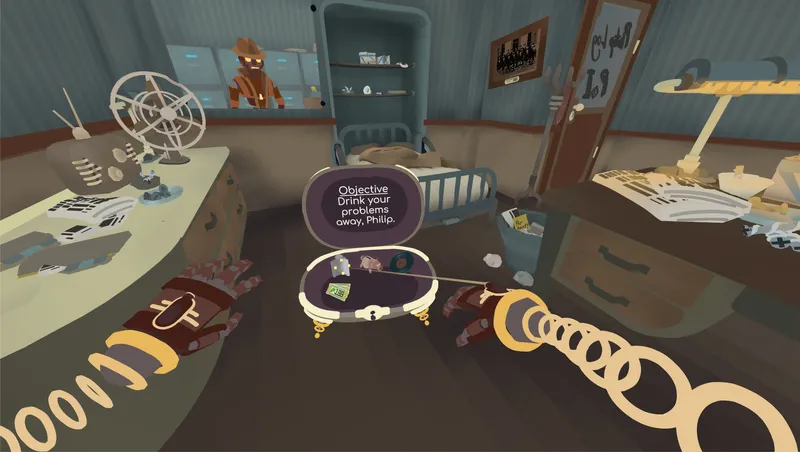Virtual reality is here to stay. It is showing up everywhere – from being an integral part in large scale conferences to showing up at small, close knit meetups. Practically everywhere you look, VR is booting up to alter every industry it touches; but where did it all come from? Why is virtual reality proliferating now like never before?

In a series of interviews and re-publications, we venture into the past to see where this exciting virtual reality ride began. Today, we interview Larry Rosenthal of “cube3.com” who has worked in the 3D and VR fields since the late 1980s. He has seen the many rises and falls of the virtual reality medium and has documented many trends along the way.
Through several email and Twitter conversations, we questioned Rosenthal about his work in the past as well as asking about his thoughts on VR’s future. We also got information about Rosenthal’s Indiegogo campaign called “The Mediaverse:The VR MuseuCON of POP Culture” which is planned to be a Virtual Reality world for all things pop culture and fandom. There is a lot of exciting stories here, and it gives great insights into the VR communities present decades prior to today. Sit back, relax, and enjoy the interview written below.
So Larry, what got you started in 3D and VR?
I always been involved in design and 3d. I was in my teens in the 1970’s so I was a child of the Star Wars, Lucas/Spielberg Invasion into Pop Culture. Even before them, I read and saw all the earlier sci fi and fantasy movies, books and TV shows. And as the “art kid” growing up, those images flooded my drawings and model making abilities until i went away to college.
In design school, Pratt Institute, in the early 80s I focused on the ‘skills’ the people who had made those films had studied. I became an Industrial Designer and broadened my interests toward all media and design related histories and ideas. When I began Pratt it was as part of the last ‘traditionally trained’ designers. In my Junior year, I lobbied strongly with my chairman to start a class for Designers on the just bought Vax supercomputer that was intended only for film majors and a few fine artists. He created that class, (gave a start to some well known folk in the industry) and I began it. I quit within 2 weeks when confronted with 6 months of coding to create a single “genie bottle raster render” design. Suffice it to say 3D wasnt ready for Designers then as much of a creative tool.
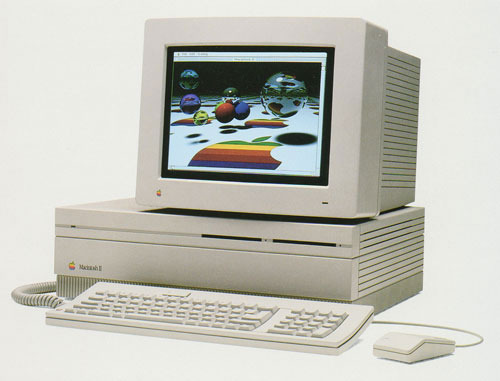
Three to four years later the first Color Mac IIs came out. I was a creative director at an agency that was known for store and display design and marketing. As the “young guy creative” they put the big color mac on my desk to see what it could do. I got access to the alphas of Adobe Illustrator, Photoshop and other software as well as the early Mac based 3d tools.
Swivel3D- which came out of VPLs VR research, and Virtus VR, which was the first real time 3d tool on the Mac. I Would stay late until 10pm each night using these tools and realizing that the GUI of the MAC had met me ½ way and that finally tools for designers on computers, rather than being a computer user, had arrived. Finally I went out and spent over 6k on the ONLY MacIIX not spoken for in NYC. I bought it from Rick Ocasek of the Cars fame, chock full of software for design and multimedia;) I saw the future that year;) I started Cube3 to see where all of this new medium would go with another co worker from that agency, by 1990.
What was the virtual reality hardware and software like in the 1990s? How do the tools of the past compare what is being used now?
Over 25 years the hardware always seems to get faster and less expensive and the software always seems to get more expensive, then all of a sudden free, then obsolete. In terms of VR and RT 3D, there were maybe 3 major hardware and software battleground eras that defined what creative projects we as designers could produce.
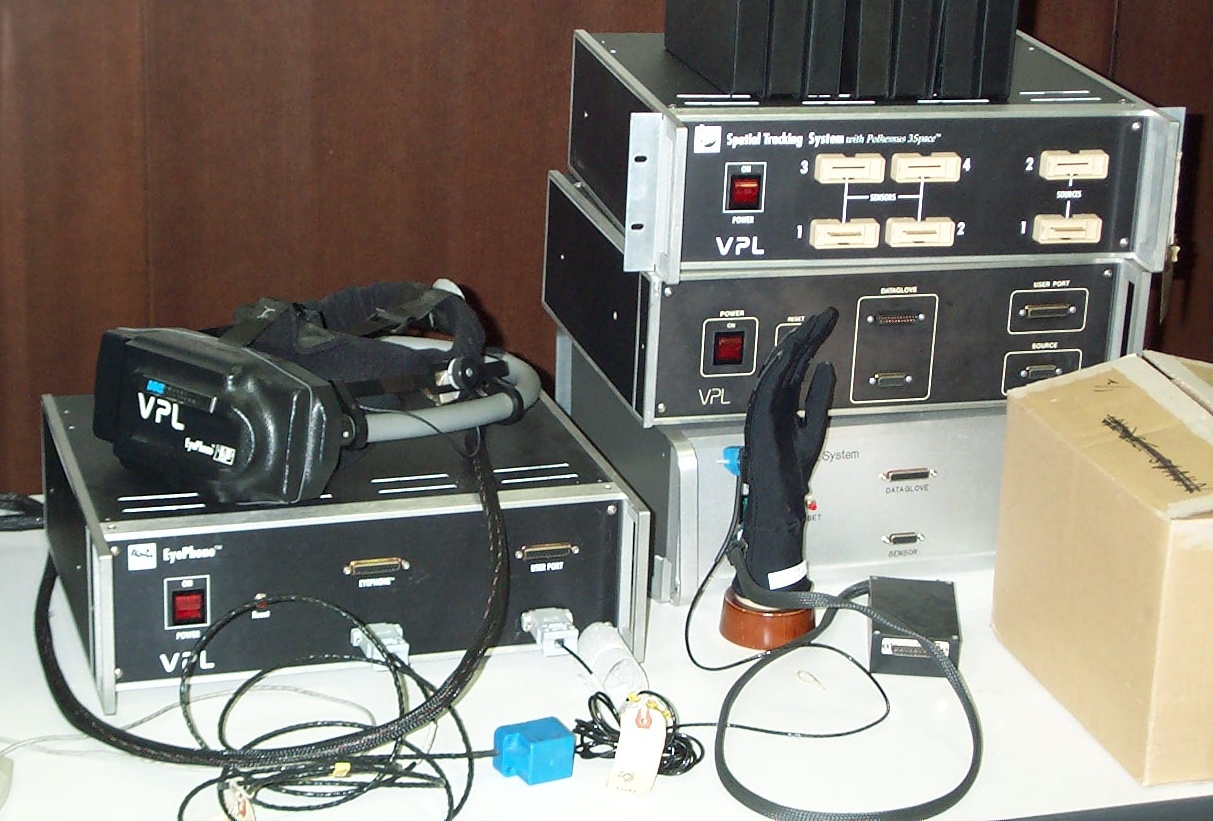
In the late 80s and early 90s, the 3D world first split into the high and low end price markets. Work Stations vs. PCs/Macs/Amigas. And Most VR HMDs since they were expensive devices out of tech schools and science focused engineering places, so they mainly targeted the higher end workstations. There were some PC and Mac based versions of course but most PC based 3D VR was going to be done as screen display for presentations to clients or dev work like at VPL Research.
So while I could use a software called VirtusVR for Store design or set design on a Mac or PC, others would use a Silicon Graphics, or Intergraph workstation if they were doing higher end development using HMDs etc. Most rendering on PCs was all done in software unit the later 90s anyway, so there were limits to what one could do, usually in terms of the size of models and frame rates.
When 3D video cards became common in the later 90s it ushered in the 3D games market and RT3D finally became an “aesthetic’ people “could” like. Before that it was always considered “rough and aliasing” and only pre rendered Pixar like renderman playback movies/videos were considered “consumer ready for prime time.”
Silicon Graphics was the major player in high end 3D for most of that decade. They created and marketed special software and hardware combos for VRML (O2 and Cosmo) as well as for all thing RT3D. Eventually they lost almost all market share to PCs with accelerated 3D cards from NVidia/ 3dlabs, ATI and others. That plus the abundance of finding a copy of 3D Max on every stray CDROM burn, made tools like 3D MAX and then Maya the mainstays of tools for 3d content creation. There were many outliers, that offered 3D tools for all uses, Caligari, Blender, and of course Lightwave, but Autodesk in the end consolidate the market for 3D tools in the US. Mean while, Dassault of France still owns an impressive library of RT3D tools and technologies.
In RT3D there were many specialized software tools and platforms that all attempted to dominate the markets. Some were part of the VRML world, Vrealms, Vreams, Cosmo, Vizx3D etc. and some were proprietary 3d format based such as Viewpoint, Cult, Axel3D, Virtools, Anark, B3D, Macromedia Shockwave 3D and many more that all kept coming and going until maybe 2006, when then a few Java based tools, Unity3D and now X3D based tools also tried to get into what was the “Second Life and Virtual Worlds” action. At that time the term VR was dead completely, and the politically correct term was “virtual worlds” or still MMOs if you made games.
Where were people organizing get-togethers to talk about Virtual Reality?
As VRML was getting more interest and looked like it might go somewhere, we formed the NYVRMLSIG. The location we met at was the newly created Alt.Coffee Cybercafe in the Lower East Side of Manhattan. I knew its owners and they had given free “server” range over using the place and its backrooms for SIG meetings. They were one of the first cyber cafes with T1 net access in NYC, so it was perfect. We had other gatherings as well there, and even a book on the web projects of many of the regulars was published, including the NYVRMSLIG projects like a virtual coney island. We met monthly, invited technology makers and designers to demo and guest speak. One month during the Melker New Media Show in NY the back room of the Alt.Coffee ended up hosting the first real gathering of the NY and CA VRML crowds. After the Shows planned BOF meeting in the convention hall over 100 or more tried to fit into the small back room of that cafe. It felt like a summer heatwave subway car ride.
As we needed larger spaces I was able to set up space at SGI’s office in NYC for a roundtable I moderated called “Places not Pages: Birth of the 3D Net” which brought together speakers that really ran the gamut from web artsy magazine publishing, to VR, to even nascent augmented reality (AR) being done at ITP school at NYU using video and public access TV!
Were their Virtual Reality meetups, tradeshows, and conferences going on?
In 2002, I used the same format and with the added sponsorship of the Digital Garage and MindAvenue Software (Axel3D). I started the SFWEB group. We met monthly at the DV Garage and had demos from the makers of the web3d tools of that time. There were demos of X3D by Tony Parisi and Joe Williams, Vizx3D by Keith Victor, Demos of Anark, Viewpoint, and Cult3D. Macromedia Shockwave 3D as well as Virtools were other web3d platforms demoed.

One meeting of note took place in the Class room of new media 3D pioneer/educator Jane Veeder of SFSU, whose class was one of the early beta sites for Second Life. It was at that meeting that the managers of Second Life asked for and were presented with the strong case for the idea of “digital ownership/commerce” of the content made by the people using the platform.
By 2006 the Second Life craze had surfaced and the SFWEB was forgotten to the fancy parties of the nuevo virtual. Go with the flow.
Flashback: Tony Parisi on Co-Creating the Virtual Reality Markup Language (VRML)
You were writing articles for a couple of 3D/VR new publications in the 1990s. What types of topics were you writing about?
I actually wrote the most mainstream media articles about 3D/ Media and Technology in the early 1990s as the Mac design/computer thing took off. I wrote two articles for ID (Industrial Design) Magazine. The first was titled “Can you Sketch on a Computer” and it put forth some thinking about design process, its speed, editing, and how the new tools might/could affect each. Im happy that 25 years later many are finally asking the same questions.
The second one was published and heavily edited. It was called the “Post material Design.” It dealt with interface design and the end of plastic nobs and asked if even the name of our profession and the magazine “Industrial Design” should be looked at being changed as we moved away from our Industrial into a Post Material virtually designed world. The editors kind of took unkindly to my idea, and the article published wasn’t what I had hoped. I didn’t write for them again. A few years later, the magazine rebranded as ID magazine (International Design).
In the mid 1990s I wrote articles for some web publications and VR magazine attempts as paper publications. One article on 2D/3D Interface you’ve just republished on the uploadvr.com website. That one has had the longest mileage. It has been asked for or republished/updated maybe 3 times since 1996.
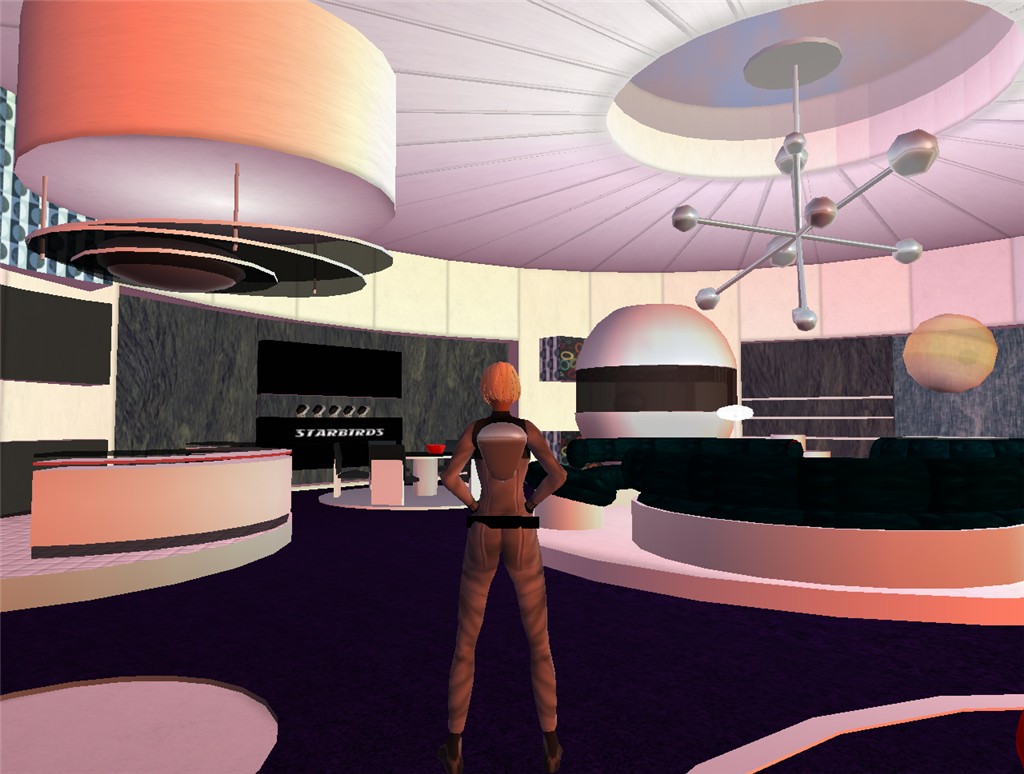
Flashback: Virtual is Reality Again – Interface vs Interference Design
Who else was writing about VR in the 1990s?
Other than the usual suspects who get mentioned all the time now (Howard Rheingold’s book, WIRED, MONDO 2000…etc), I’ll toss in a few who might be less remembered or known. Great stuff came from New Media Magazine and Verbum also out of SF area, which of course was the epicenter for all things VR Media related. There was a magazine called “Mediamattic” out of Amsterdam that I particularly liked to get in NY. It was probably only quarterly, but it was always smarter and more critical about new media than the SF magazines which always drank too much of their Kool Aid as they say.
MIT Media Lab publications back then had good articles and things and wasn’t also as focused on the ‘start up culture of entrepreneurs’ as it is today. There was a “VR World” magazine that came out in the early 90s during the craze. I had done an illustration for them, a VR Carnival Barker 3D rendering. I might have a color xerox of it somewhere in an older print portfolio. It might have been done for an article on marketing VR. I might have co-wrote the article with John Gallagher, but I don’t remember.
There’s a great Nightline TV debate about VR with Jaron Lanier that someone has finally put on YouTube. Its indicative of the mainstream PR and Press of that time.
Continue Reading on Page 2 – topics include the ‘Snow Crash’ CD-ROM, the “failed” Virtual Boy, and more.
UploadVR’s “Flashback” series is an ongoing effort. We are looking for virtual reality pioneers who worked with VR in the 1990s and before. If you are one of those people or know someone who is, email Matthew Terndrup at terndrupm@gmail.com to arrange for an interview.
Tell us about Cube3.
Cube3 was me and Designer Alex Shamson’s company we started in 1990. We were the early NYC evangelists, VARS, demoguys for all things 3D Design and Multimedia. We created and gave monthly seminars on 3D design and Presentation at Apple NYC, as well as many trade shows. We got all the cool toys, wrote some cool articles, and made a lot of the cool demos for the time. We formed a few early SIGS, and sponsored/created the NYVRMLSIG. Many who first learned about 3D /VR or computers as design tools in NYC back then, heard it at one of our meetings or seminars. We pushed the tech as far as we could; always as designers and creators “first.” We never desired to allow the technology or medium to lead the intent of what we created.
25 years later I think others are finally getting what we saw early about how this medium actually works. Eventually Alex (the ‘smart one’) went back to more traditional Art mediums. I moved out to California, then Florida, and I continue to use the [Cube3] name, as much as for a Virtual Avatar Tag as anything else; for all these years working on projects immersed with tech issues. So today online, I’m the OG Cube3, and [the website] will be there into the future.
How did you get involved in ‘The Adventures of the Galaxy Rangers?’
‘The Rangers’ was my first ‘fulltime’ job out of college. I was known in my class as the ‘futurist designer guy’ who couldn’t help but draw spaceships and robots even as I learned about the bauhaus. A few months out of school, while I was freelancing in exhibit /museum design, I got a call from another older ex-Pratt student who asked me if i was the guy who ‘drew the spaceships.’ I said I was, and he then introduced me to the producers of the project he had worked on creating – ‘The Adventures of the Galaxy Rangers.’
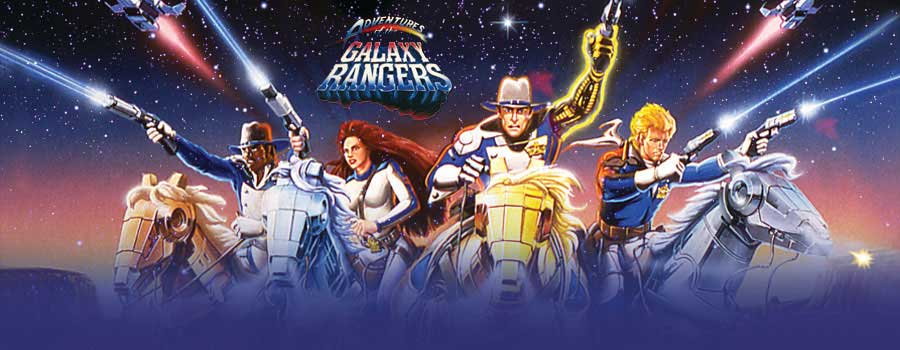
It was an animated show that would also include CGI graphics inserted into some scenes. Very much a first for a daily episodic cartoon show. I was hired and then spent the next six months, six days a week in a loft in NYC making thousands of drawings of all things sci-fi that would be traced over and animated in Japan. Then I got canned because I wanted to be paid for the sixth day worked. That was that.
Eventually someone put my credit into IMDB. Post production, which a few made it too, was done back in the US, where the CGI wireframe elements were made. The entire experience was ‘startup’ like not very different from tech startups today. 30 of us all under 30 in one big space, drawing, creating, fighting, not sleeping, eating chinese food, and making sometimes some really good shit. I think about 60 episodes got made. No major toy deal in the US though, and it died. Though I hear it was big in France, go figure.
What was the “SnowCrash CD-Rom”?
So as I mentioned in NYC in the early 90’s I was the ‘go to guy’ for all things 3D, Futurism, Design, Shopping, Computer New Media. A producer at Paramount who wanted to make Neal Stephenson’s book Snowcrash into a CD-ROM game and gave me a call to asked if I was interested in directing it. I thought the book was great comic book graphic novel material and said sure. He set up a meeting with Neal, himself and I.
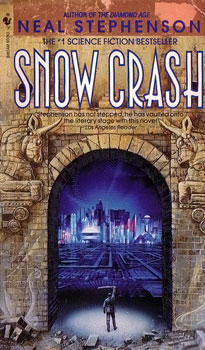
At that meeting I learned the irony that Neal had intended the story to be a hypercard based graphic novel, but that his “artist friend” got behind in drawings and another friend had suggested he just sell it as a novel; and so it all came from that. I spent a few weeks making some early pre-production design rendering in 3D of the bar fight, and the rat thing as well as constructing the Black Sun Bar as a realtime 3D VR model in Virtus VR. We all met again. Everyone said “cool” but in the end I think Neal wanted a movie deal, not a CD-Rom deal, and it never went forward.
One VR caveat is that a few years later I would meet the German company named “Black Sun” later change for legal reason to “Blaxxun” and we would plop that VR Model of the BLACK SUN BAR into their VRML based Multiuser software for the web. The Black Sun Bar actually existed in cyberspace that day. It ran online at cube3.com until the software maker stopped supporting the format; decades later.
You mentioned on Twitter that you once learned early on that the VR revolution of the 1990s would not amount to the hype at that time. How did that story go about?
I had a “bathroom hand drying” chat with the “product manager” or “marketing manager” from Sega for the upcoming Virtual Boy. We were both at the same lunch table at the now remembered “Mekler VR Show” in NYC in 1992. I was there with my partner John Gallagher as we were on the panel for “Marketing using VR.” We had just done the first white paper on record for Miller Brewing about using the VR LBEs etc for Promotions.
Anyhow, the BIG KAHUNA in the room that day was SEGA and this guy who represented them for the yet truly unseen Virtual Boy, at least unseen in NYC). Everyone wanted that deal, whatever that deal was. Later that day I ran into the guy in the men’s room and while we dried hands, I asked some targeted questions. I left the restroom that day with the knowledge that the VR revolution would not be happening that year, and not from SEGA.
Continue Reading on Page 3 – topics include the virtual world Cybertown, Scientology’s interest in VR, and more.
UploadVR’s “Flashback” series is an ongoing effort. We are looking for virtual reality pioneers who worked with VR in the 1990s and before. If you are one of those people or know someone who is, email Matthew Terndrup at terndrupm@gmail.com to arrange for an interview.
You also briefly talked about the ‘Church of Scientology’ being interested in VR. What was their level of involvement like in the 90s?
One guy was interested. It’s not like he was Tom Cruise though. While I lived in CA, I spent a lot of my time going back and forth between LA and SF trying to merge the creative and tech worlds. That idea alone requires a full interview.
One thing I would always do if I could was go to Siggraph and Comic Con each year. Today, this might sound logical, but from about 1997 to 2005, I was one of the only guys at Comic-Con walking around with a laptop and talking up “digital media” and Transmedia Thinking. The fact that I also had 3D and VR type things on my laptop was unheard of to those still figuring out Flash.
While at the show I met a guy who was a marketing guy from Bridge Publications, who were the Sci fi publishing arm of the whole Scientology thing. He was into listening about how one could build a 3D VR world on the internet that could be filled with people globally as avatars and interacting or role playing characters from the “Battlefield Earth” movie that had come out and failed a few years earlier. Almost no one else, large or small company, media or publisher, at the show really gave my pitch the time of day; and what can I say, work is work.
Long Story Short, I returned home to SF, and we spoke again on phone. He then tried to bump up the level of meeting and began to ask me “non VR questions” to which I let him know that I doubt “that I would be scientology material.” He was to have his supervisor call me. She never did. I might have tried one more time on the phone to get to them, but the stars and the DC-8 starships obviously weren’t aligned, and there would be no Xenu VR made back then.
What was ‘Cybertown?’
Cybertown was an ambitions VRML based Virtual World Community started about the same time as my Starbase C3 efforts in 1995 and 1996. It also used the VRML Multi User Technology from Blaxxun and probably was the largest VRML based 3D Community online ever. It was founded by two guys out of LA (Hawk and SFX were their AV names) who also were very important in starting the LAVRMLSIG of which I became a member of when I moved to LA in 1996. It was originally called Colony City and was a Blaxxun Sponsored Project that grew with a Cybertown merger. I don’t know the particulars of who really created what, but one could rent a home in a sci fi future world, get avatars, join clubs, get a job etc. Up until Second Life and its contender clones in the mid 2000s, Cybertown was probably the most successful, at least in terms of wide experimentation of the VR online worlds.
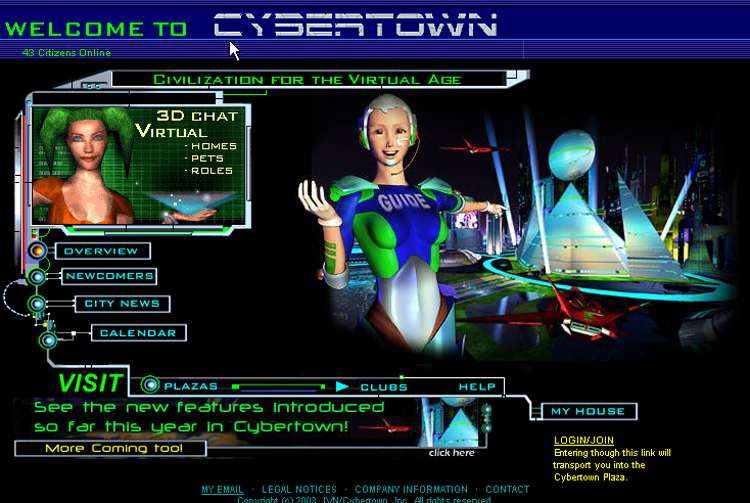
In your opinion, is virtual reality here to stay this time around? And, what do you think will be the leading forces in this recent resurgence of VR?
No one can really know what will happen, but we do seem to be at a time where the elements needed for a new medium to arise and to find mass usage does exist. VR never went away, it just became separated into HMD or CAVE usage in larger corporate/military or educational institutions; or it became fast RT3D used on screens and TV sets as games. The level of immersion was different, but that didn’t mean one couldn’t make very immersive experiences for each expression of the medium
No longer will VR be only a 3D modelers or 3D photographers/scanners/media, one that takes major production skills, but one that every family member can create and put on a Facebook page.
Today we have four factors that are colliding to make VR what we see happening. We have the HD small screens that came from the Smartphone product push (extending into the light reflective/lens eye technologies that AR products use) for display. We have the Death of Flash (also do to mobile) that opens up creatives looking for a medium to sell production value in and the apparent winning of webgl as a web3d format after 20 years of battles. But most importantly we have the 360 cameras and the Internet Networks Application culture that will allow for tons of content to be put into the world almost overnight. No longer will VR be only a 3D modelers or 3D photographers/scanners/media, one that takes major production skills, but one that every family member can create and put on a Facebook page.
Is there anything that can stop the momentum?
Continuing my previous thoughts, not really. Not even bad content in my opinion. Even though I’d like to see much great stuff made by many and still want to be involved in making of what I’d hope would be considered “good content.” I don’t think even “bad” content can stop this wave. The financial tidal wave this time is so much greater do to those 4 converging interests I mentioned before. Look At Google Glass. It “failed” by all public measures, but Google can’t admit or maybe more accurately understand why it failed. But in terms of the ships journey over the waves, Google says they will keep on sailing forward. The end of the flat monitor, for entertainment and simulation experiences at mass usage levels is close.
The technology business,and technology itself for that matter, works to the motto “beta or obsolete” and as long as all media types can be “swallowed” by VR, the ONE ring to rule them all. The orcs ,the men, the elves, and even the single hobbit, will all want that ring.
Any thoughts on Augmented Reality (AR)?
I’ve never really separated AR from VR. I mentioned before that when I held an early public roundtable at SGI called “Places not Pages, the future of the 3D Web.” Way back in 1995, I invited both VR and AR experts of the day to speak and contribute. We’ve always “augmented reality” via designed objects and artifacts as long as we’ve been modern humans. We’ve at the same time always had a “virtual life” within ourselves as our thoughts and dreams, which would be expressed outward as art.
So to me, both AR and VR are expressions of the same desires to find some control over the universe via our wits and skills. In practical terms, I do think most public usages of these technologies will be in examples of what’s called AR today, which will be mainly driven by the desire to respect the “other” in society; while most usage of VR will be in singular, safe environments like the home or when seated alone while traveling.
I hope most people don’t desire to exist alone for a lifetime separate from nature-reality, even if everything seems virtually perfect in their head domes. In fact that was the underlying cautionary tale of the STARBASE C3 narrative. It’s still a good VR adventure, maybe one day I’ll get to finally make it fully in its true medium.
Tell us about your Indiegogo campaign.
This week I’ve taken all I learned from all the 3D/VR waves I’ve surfed over the last decades and decided to merge that with an attempt at a crowdfunded project. It’s a project that one really couldn’t create without crowdfunding being at it’s core.
It’s called “The Mediaverse:The VR MuseuCON of POP Culture” A VR World for all Things Pop Culture and Fandom.
Imagine a Mashup of the Smithsonian Institution, Disneyworld and Comic-Con that’s designed and created now, during the time of VR.
The Mediaverse MuseuCON is to be a VIRTUAL PLACE on the Internet, that combines the text of Fandom Wikipedias, with videos and images and 3D environments and artifacts that span the POP culture universe. There are 12 or more planned POP Culture Media Spheres that encompass the history of the different Genres that have made our Fandom culture for over 60 years. For example, Comic Book Culture, SCI-FI Fantasy Genre, Comedy, Pop Music, Advertising, Tech Gadgets, etc. All illustrated as 3D VR experiences that edutain and inform everyone and that are hosted by a group of experts in each area. I’ve got some team members lined up, others I hope the IndieGogo will fund and attract.
We plan to take a modular approach to building and designing the Mediaverse MuseuCON.
The first crowdfunding success will be targeted to preliminary design, gathering of some curated content, team building and a creating a limited VR environment to explore and meet up at in Virtual Reality. An Open Sims early demo version space is live now hosted on www.kitely.com.
It has many of the VR theaters and Sci-Fi Buildings and classic Sci-Fi spaceships on display that I had used in my Second Life Communities for years. It’s rough, but a start.
If we pass certain milestones, we will increase our production and scope to build out the Mediaverse quicker and with more and more of Fandoms wants. Should we build a Dr. Who Tribute World first? Or a Star Wars Zone? Maybe a Zone dedicated to Female Characters and their Creators in Science Fiction and Fantasy? Should we create a Punk Rock Club that celebrates places like CBGB’s that are no longer with us? What about a Full Sized Godzilla? We want the fan community to help fund and vote on much of what gets built when and first.
Whichever 3D engine(s) we finally use, or HMDs we support, or multiple 3D VR techs we use will all depend on what’s ”the best thing” as we release and grow the Mediaverse. Our goal is to make a VR world that’s easy for all to use, accessible to all, and most of all, fun and entertaining to experience and learn in. I want to let the design and content to suggest the tech, so often its the other way around.
People interested can view the Galleries to see some of the designs and Ideas we’ve put up.
The website is at www.mediaverse.net and the Indiegogo Page is Live Now at
http://igg.me/at/mediaverse/x/8124003.
It can be a really exciting long term VR project, and I hope both fans of POP media, and the VR community would help make it happen. We live in the Mediaverse, spend all this time making it, but need more museums and flashback type projects to keep us informed about where we’ve been so we can better know where we want to go.
Where can people find more information about you? How can they contact you?
I’ve been online at www.cube3.com since 1995. Same email: larryr@cube3.com, same pair of virtual pants. The sites galleries are full of images from the 25 years of 3D/VR type project I’ve worked on. Please feel free to visit, and If i can assist others in areas of all things 3Dmedia and VR. Please let me know. I’m around.
UploadVR’s “Flashback” series is an ongoing effort. We are looking for virtual reality pioneers who worked with VR in the 1990s and before. If you are one of those people or know someone who is, email Matthew Terndrup at terndrupm@gmail.com to arrange for an interview.

